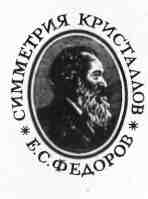


Meeting report
Powder Diffraction and Crystal Chemistry in Russia

An International Conference on "Powder Diffraction and Crystal Chemistry" was organized by the Commission on Powder Diffraction of the IUCr, the Russian Association "Powder Crystallography", the Department of Crystallography of St Petersburg University (S. K. Filatov, the Chairman of the Organizing Committee) and the firm Bourevestnic (manufacturer of X-ray equipment) at St Petersburg University, June 20-23, 1994.
The scientific program was devoted to new developments in powder diffraction methods, advances in crystal chemistry, high temperature and high pressure diffraction, and the use of neutron, electron and synchrotron X-ray diffraction. 165 participants from 20 countries presented 40 lectures and 70 posters, a JCPDS-ICDD workshop was run by J. W. Visser and R. L. Snyder and there was an exhibition of scientific instruments and software products. Plenary lectures included: Structures of the high temperature superconductors (R. L. Snyder); Angle dispersive time-of-flight powder diffraction (G. Will); Line broadening analysis of oxide ceramics (G. Kimmel); Structural systematics of compressed solids (W. B. Holzapfel); Structural disorder in Fe-layer silicates by simulation of powder patterns (E. A. Goilo); In situ studies of structural phase transformations in framework aluminosilicates at high pressures (B. A. Fursenko); and Mineral structure determination by simulation of powder patterns (B. A. Sakharov).
The social program included a voyage along the Neva river, an excursion to St Petersburg and visits to a theatre and the Hermitage.
It was here, in St Petersburg, that E. S. Fedorov discovered the 230 space groups in 1890, opening the door to modern crystallography. E. S. Fedorov founded the first Department of Crystallography in Russia, in St Petersburg at the Mining Institute, and his pupil, D. M. Anshelis, founded the second Department of Crystallography in St Petersburg at the University in 1924. It is this 70 year old department which served as the local organizing body of the present Conference. The remarkable contributions of E. S. Fedorov, including the design of the universal stage of petrography, paved the way for a broad spectrum of work by his pupils in structural analysis, crystal growth, and optical crystallography and mineralogy. This highly successful conference continues the tradition of Russian contributions to international crystallography.
J. FialaChairman of the Organizing Committee


